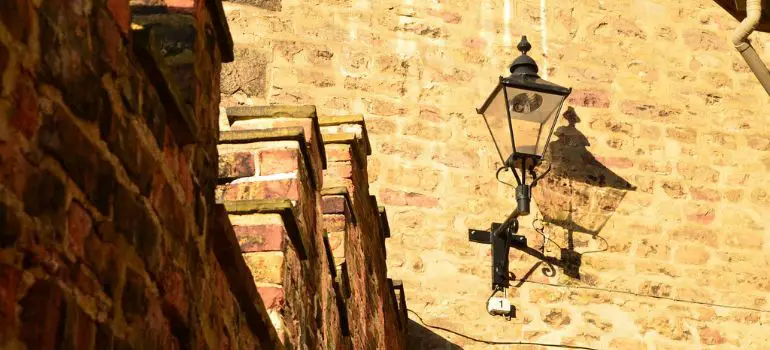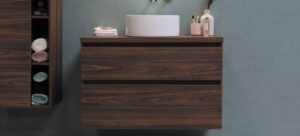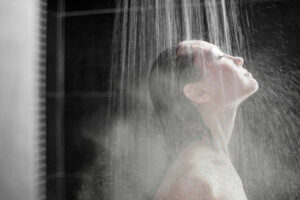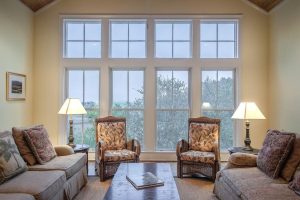Introduction
Extending a light fixture from a wall is a fantastic way to enhance the ambiance and functionality of a room. Whether you want to illuminate a dark corner or create a focal point with a stylish fixture, the process involves several crucial steps that we will guide you through.
Assess Your Space
Before you begin, assess your space to determine the need for additional lighting. Consider the room’s purpose and the specific area you want to light up. Choose a fixture that complements your décor and meets your lighting requirements.
Gather the Necessary Tools and Materials
Before you begin extending a light fixture from your wall, it’s essential to gather all the required tools and materials. Having everything ready in advance will make the process smoother and more efficient. Here’s a list of what you’ll need:
- Screwdriver: You’ll need a screwdriver for various tasks, such as removing the existing fixture and securing the new one.
- Wire Strippers: These are essential for safely stripping the insulation from electrical wires.
- Voltage Tester: A voltage tester is crucial for verifying that the power is off before you start working on the electrical connections.
- Electrical Tape: Electrical tape is used to insulate and secure wire connections, ensuring safety.
- Ladder: Depending on the height of your light fixture, you may need a ladder to reach the installation area safely.
- New Light Fixture: Choose the light fixture that suits your room’s style and lighting needs. Make sure it comes with all the necessary hardware for installation.
- Mounting Plate: If the fixture requires a separate mounting plate, ensure you have it ready.
- Junction Box: If your new fixture needs a different junction box than the existing one, make sure you have it on hand.
- Electrical Wiring: Ensure you have the appropriate electrical wiring to connect the new fixture to the existing electrical supply.
- Wire Nuts: These are used to secure wire connections and ensure they are safe and stable.
- Measuring Tape: A measuring tape will help you determine the ideal height and placement for your new fixture.
- Marker or Pencil: Use a marker or pencil to mark the spot on the wall where you intend to install the fixture.
Turn Off the Power
Safety should be your top priority when working with electrical components. Turn off the power to the circuit that supplies electricity to the existing fixture at your circuit breaker panel.
Remove the Existing Fixture
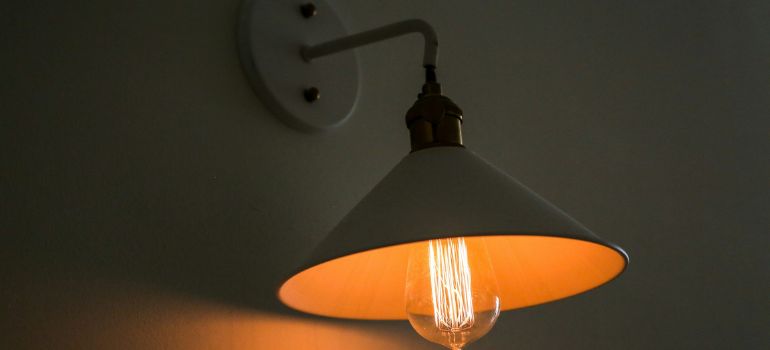
Carefully remove the current fixture from the wall by unscrewing it from the mounting bracket. Disconnect the wiring while keeping the wires exposed for the next steps.
Measure and Plan
Before you proceed with the installation of your extended light fixture, it’s essential to take accurate measurements and plan the placement carefully. Proper planning ensures that your fixture is positioned correctly and enhances both the aesthetics and functionality of the space. Here’s how to do it:
- Determine the Ideal Location: Start by deciding precisely where you want to install the new light fixture on the wall. Consider the purpose of the lighting, the room’s layout, and any existing décor elements.
- Measure the Wall: Use a measuring tape to measure the height from the floor to the desired location for your fixture. Also, measure the distance from nearby walls and other reference points to ensure proper alignment.
- Mark the Mounting Point: Once you’ve determined the ideal location, mark the exact spot on the wall using a pencil or marker. This mark will serve as a guide during the installation process.
- Check for Obstacles: Examine the wall to ensure there are no hidden obstacles, such as studs, pipes, or electrical wiring, that could interfere with the installation. If obstacles are present, you may need to adjust the placement of the fixture or take precautions to work around them.
- Consider Aesthetics: Take into account the aesthetics of the room and the fixture itself. Ensure that the chosen location complements the overall design and provides the desired lighting effect.
- Verify Measurements: Double-check your measurements to ensure accuracy. This step is crucial, as even a small error in placement can affect the final look and functionality of the fixture.
- Adjust as Needed: If you’re unsure about the placement, it’s better to make adjustments at this stage rather than during the actual installation. Minor changes in the position can make a significant difference in the visual impact of the fixture.
- Consult the Fixture’s Instructions: Review the manufacturer’s instructions for the light fixture you’re installing. They may provide specific recommendations regarding placement and height.
Install a New Junction Box
If your new fixture requires a different junction box, install it according to the manufacturer’s instructions. The junction box should be securely fastened to the wall.
Run Electrical Wiring
Running electrical wiring is a crucial step in extending a light fixture from the wall. Properly routing and connecting the wires ensures that your new fixture functions safely and efficiently. Here’s how to do it:
- Prepare the Wiring: Before running the wiring, make sure the electrical power is turned off at the circuit breaker panel to prevent any accidents. Use a voltage tester to confirm that there is no electricity flowing to the existing fixture.
- Access the Wiring: If the existing wiring is not already accessible, you may need to remove a portion of the wall covering or ceiling to reach it. Exercise caution and follow safety guidelines when doing so.
- Route the Wiring: Determine the path for running the new electrical wiring from the existing junction box to the location where you want to install the new light fixture. Be mindful of obstacles and structural elements within the walls or ceiling.
- Measure and Cut the Wiring: Measure the required length of electrical wiring, ensuring you have enough to reach from the existing junction box to the new location. Use wire cutters to trim the wiring to the correct length.
- Secure the Wiring: Use cable staples or clips to secure the wiring in place along its route. This prevents the wires from moving or getting damaged during the installation process.
- Protect the Wiring: If the wiring passes through any holes or sharp edges in the wall or ceiling, protect it with conduit or grommets to prevent abrasion and damage to the insulation.
- Leave Excess Wiring: Leave a few inches of excess wiring at both the junction box and the location where you’ll mount the new fixture. This will provide flexibility when connecting the wires.
- Label and Identify Wires: If your electrical wiring includes multiple conductors, such as black (hot), white (neutral), and green or bare (ground) wires, be sure to label and identify them correctly. This ensures a proper and safe connection.
- Test Wiring Continuity: Before proceeding to the next steps, use a continuity tester or a multimeter to verify the integrity of the wiring and connections. This test helps identify any potential issues with the wiring.
Attach the Fixture Mounting Plate
Attach the fixture’s mounting plate to the junction box, ensuring it is level and secure. This plate will hold the fixture in place.
Mount the Light Fixture
Mount the light fixture onto the mounting plate using the provided hardware. Follow the manufacturer’s instructions for proper installation.
Connect the Electrical Wiring
Connect the electrical wiring from the fixture to the wiring in the junction box. Secure the connections with wire nuts and electrical tape, ensuring they are tight and well-insulated.
Secure the Fixture in Place
Securing the light fixture properly is a critical step in the installation process. Ensuring that it is securely attached to the wall guarantees both safety and stability. Here’s how to secure the fixture in place:
- Align the Mounting Holes: Position the light fixture over the marked mounting point on the wall, aligning it with the mounting plate or junction box. Ensure that the fixture is level both horizontally and vertically.
- Insert Mounting Screws or Bolts: Depending on the type of fixture and mounting hardware provided, insert the appropriate screws or bolts through the fixture’s mounting holes and into the mounting plate or junction box. Use a screwdriver or wrench to tighten them securely.
- Follow Manufacturer’s Instructions: Refer to the manufacturer’s instructions that came with the fixture for specific guidance on securing it in place. Follow any recommended torque specifications or additional steps provided.
- Check for Stability: After attaching the fixture, gently shake or wiggle it to check for stability. It should not wobble or feel loose. If it does, tighten the mounting hardware further until the fixture is firmly secured.
- Inspect Wiring Connections: While ensuring the fixture is stable, double-check the wiring connections. Make sure they are properly secured with wire nuts and electrical tape, and there are no exposed wires.
- Attach Decorative Elements: If your fixture includes decorative elements such as shades, covers, or decorative bulbs, attach them according to the manufacturer’s instructions. These finishing touches can enhance the fixture’s appearance.
- Clean and Remove Debris: Wipe down the fixture to remove any fingerprints, dirt, or debris that may have accumulated during the installation process. A clean fixture looks more appealing and functions optimally.
- Test the Fixture: Before completing the installation, turn the power back on and test the light fixture to ensure it functions correctly. Check for any flickering or issues with the light output.
- Make Final Adjustments: If necessary, make any final adjustments to the fixture’s position or alignment to achieve the desired lighting effect and appearance.
- Secure Fasteners: Once you are satisfied with the fixture’s stability, ensure that all fasteners, screws, or bolts are securely tightened. This step is crucial for long-term durability.
Turn the Power Back On
Return to your circuit breaker panel and switch the power back on to the circuit. Use a voltage tester to ensure that electricity is flowing to the fixture.
Test the Light Fixture
Test the light fixture by turning it on and off to confirm that it functions correctly. Make any necessary adjustments to the positioning or wiring if needed.
Final Touches and Aesthetics
Complete your project by adding any final touches, such as decorative elements or accessories, to enhance the aesthetics of your newly extended light fixture.
Congratulations! You’ve successfully extended a light fixture from your wall, improving the lighting and aesthetics of your space.
Conclusion
Extending a light fixture from the wall can be a rewarding DIY project that transforms the look and functionality of a room. By following these step-by-step instructions and prioritizing safety, you can achieve a well-lit and stylish space that suits your needs and preferences.
FAQs
While it’s possible to do it yourself, it’s crucial to follow safety guidelines and have some knowledge of electrical work. If you’re unsure, consider consulting a professional electrician.
The choice of fixture depends on your room’s style and lighting needs. Wall sconces, pendant lights, and chandeliers are popular options.
Regulations vary by location, so it’s essential to check with your local building department to determine if permits are required.
If you’re inexperienced with electrical work, it’s best to consult a licensed electrician to ensure the job is done safely and up to code.
You can conceal the wiring by running it through conduit, molding, or behind wall coverings for a clean and professional finish.
